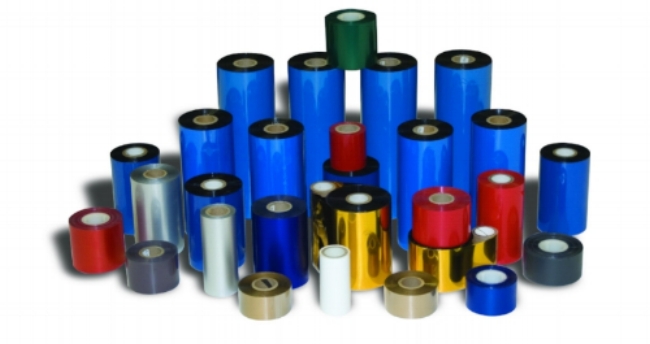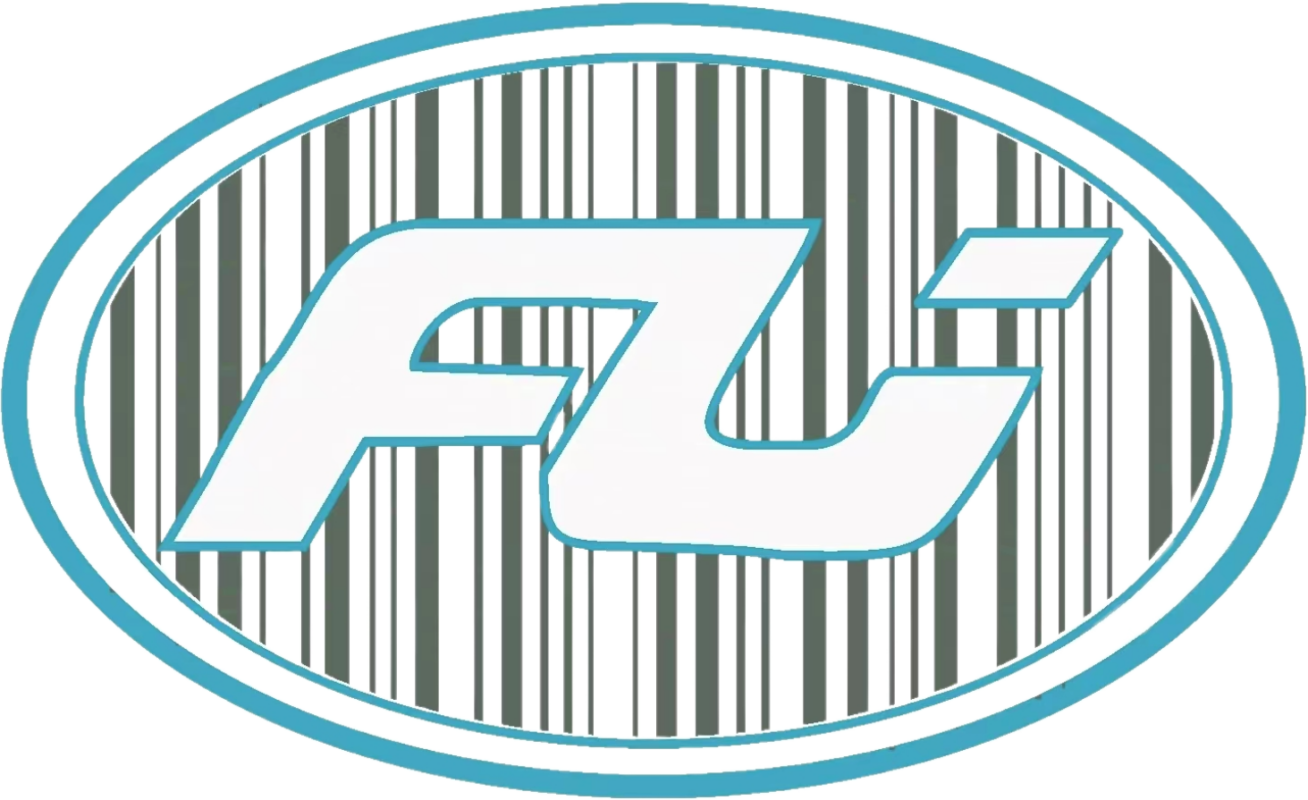ブログ
リボンカートリッジ:種類、用途、流通業者向け購入ガイド
The ribbon cartridge functions as one of the essential consumables in industrial ribbon printing systems to deliver sharp and enduring print results. The ribbon label printer often receives attention yet the ribbon cartridge remains essential since it supplies the ink medium that delivers quality output.
Distributors, resellers, and procurement teams must understand ribbon cartridges because this knowledge supports their clients who work in floristry, packaging, garment labeling and other industries. This guide provides an overview of ribbon cartridges including their functionality and various types along with important considerations for business buyers who are planning to purchase them.
What Is a Ribbon Cartridge?
Ribbon cartridges function as consumable units which hold ink-coated film or foil for thermal transfer printing and other ribbon printing technologies. The printer’s thermal or mechanical printhead uses the cartridge to place pigments or foil onto fabric ribbons.
Ribbon cartridges demonstrate compatibility with diverse ribbon materials including satin, cotton, grosgrain, and organza while standard paper printer cartridges do not. Industries that need strong, branded, or decorative ribbons require these products.
Key Functions of a Ribbon Cartridge
- The ribbon cartridge applies ink materials or foil pigments directly onto ribbon surfaces.
- Ensures smooth, consistent print quality
- Enables color accuracy, longevity, and adhesion
- Replacement of ribbon cartridges happens quickly to support intense production requirements.
Types of Ribbon Cartridges
Wax Ribbon Cartridges
Wax ribbon cartridges contain wax-based ink that melts during the printing process to stick to the ribbon surface.
Best for:
- Low-abrasion applications
- Standard satin ribbons
- Short-term promotions
Advantages:
- Lower cost
- Smooth print on coated materials
- Fast drying and simple setup
Disadvantages:
- Lower durability
- Vulnerable to heat and moisture
Resin Ribbon Cartridges
Resin ribbon inks show high resistance to exposure from heat, water, and chemical elements. It bonds more aggressively with ribbon fibers.
Best for:
- Garment tags and washable ribbons
- Harsh or outdoor environments
Advantages:
- Superior durability
- Smudge, scratch, and wash resistant
Disadvantages:
- Higher cost
- Requires higher printhead temperatures
Wax-Resin Hybrid Cartridges
This option integrates top features from both wax and resin materials.
Best for:
- Mixed material ribbons (satin + cotton)
- Packaging requiring moderate durability
Advantages:
- Good durability
- Higher definition than wax
Disadvantages:
- Slightly more expensive than wax
Foil Transfer Rolls (Foil Cartridges)
Foil rolls function as heat-activated films for hot stamping and foil printing machines instead of liquid or meltable inks.
Best for:
- Metallic prints
- Luxury branding and events
Advantages:
- Shiny and elegant finishes
- High visual impact
Disadvantages:
- Requires foil-compatible printer
- Limited color palette
Core Components of a Ribbon Cartridge
- The material used for printing the foil
- The spool mechanism functions to manage and regulate the ribbon’s feeding and winding process during printing.
- The protective shell functions to maintain ribbon cleanliness while preventing any possible contamination.
- Certain models include chips which help track ink levels and ensure compatibility.

Compatibility: Printer and Ribbon Matching
Matching with Printer Type
| Printer Type | Cartridge Type |
|---|---|
| Thermal Transfer | Wax / Resin / Wax-Resin |
| Inkjet Ribbon Printer | Inkjet Cartridge |
| Hot Foil Printer | Foil Roll |
Matching with Ribbon Material
| Ribbon Type | Recommended Cartridge Type |
|---|---|
| Satin | Wax-Resin or Inkjet Cartridge |
| Grosgrain | Resin |
| Cotton | Resin or Wax-Resin |
| Organza | Wax-Resin |
Key Applications by Industry
1. Floristry
Use satin ribbons to add custom messages to bouquets and decorations for weddings and memorial occasions.
2. Gift Packaging
Branded printed ribbons improve visual identification for retail boxes alongside cosmetic packaging and chocolate boxes.
3. Garment Labeling
Resin ribbon cartridges enable the printing of fabric labels that maintain durability through washing and ironing processes and everyday wear.
4. Events and Promotions
High-end events alongside holiday promotions and premium product packaging often utilize hot foil cartridges.
5. E-Commerce and Subscription Boxes
Personalized printed ribbon boosts customer loyalty by enhancing the unboxing experience.
The manual provides instructions for both replacing and maintaining ribbon cartridges in printers.
Installation Tips
- Turn off the printer before cartridge removal
- Align new cartridge with designated slots
- Tension the ribbon evenly to prevent jams
- Follow manufacturer’s guidance for chip-activated models
Maintenance Best Practices
- Store in cool, dry places (15–25°C recommended)
- Keep cartridges sealed until use
- Do not touch the ribbon surface to maintain cleanliness and avoid contamination.
- Clean printheads regularly to extend cartridge life
Shelf Life Guidelines
| Cartridge Type | Shelf Life (Sealed) |
|---|---|
| Wax | 12–18 months |
| Resin | 18–24 months |
| Foil | 24 months |
What Distributors Should Consider
Bulk Ordering & MOQ Strategy
- Set up tiered pricing options for orders of 100+ units, 500+ units and 1000+ units
- Customers can select from a variety of cartridge widths such as 25mm, 38mm, and 50mm.
- Retailers should think about stocking universal cartridges that work with several printer models.
Bundling Options
- Pair ribbon cartridges with:
- Ribbon label printers
- Pre-cut ribbon rolls
- Starter kits (printer + cartridge + ribbon)
Custom Label or Packaging
- Add your own branding for white-label resale
- Offer bundled consumable packs for retailers
Cost and Profitability Insights
Cost Per Print Estimate
| Cartridge Type | Approx. Cost/100m Print |
|---|---|
| Wax | $1.50–$2.00 |
| Wax-Resin | $2.50–$3.00 |
| Resin | $3.50–$4.00 |
| Foil Roll | $4.00–$5.00 |
Recurring Revenue Potential
Each printer sold = ongoing cartridge sales. Implementing subscription refill options and annual service contracts creates steady revenue streams.
Conclusion
Ribbon cartridges remain the core component for achieving superior printing performance across applications such as floristry ribbons, apparel labels and elegant packaging solutions. Resellers and distributors establish their credibility as solution providers by supplying appropriate cartridge types with accompanying education and support.
You can boost initial and recurring sales through bundled offerings by maintaining a stock of compatible ribbon cartridges for essential ribbon label printers together with diverse ribbon materials.
📧 sales@foyottr.com
📞 Tel: +86-592-6018318
🌐 Visit Our Website
💬 Contact Us for Bulk Pricing
よくあるご質問
What is a ribbon cartridge?
The ribbon cartridge serves as a consumable component that provides ink or foil to fabric ribbon printers. This cartridge deposits pigment or foil onto satin and cotton ribbon materials.
Wax ribbon cartridges provide economical printing options while resin ribbon cartridges deliver enhanced durability and the ability to withstand washing and foil ribbon cartridges supply high-end metallic finishes.
Wax is for simple, cost-effective printing. Resin offers higher durability and wash resistance. Foil is for premium, metallic finishes.
The same ribbon cartridge cannot be utilized across all printer models.
No. Always check printer compatibility. Certain printers need specific cartridge sizes and technologies including thermal, inkjet, and foil.
Cartridge replacement intervals depend on how much you use it because most cartridges print between 100 and 300 meters before needing replacement.
It depends on usage. Most cartridges print 100–300 meters. Change the ribbon cartridge when print quality deteriorates or once you hit its maximum print capacity.
Do you provide white-label ribbon cartridges that can be resold?
Yes. For B2B wholesale and OEM services inquiries please reach out to us.
📧 sales@foyottr.com
📞 Tel: +86-592-6018318
🌐 https://foyottr.com/
💬 https://foyottr.com/contact-us/

